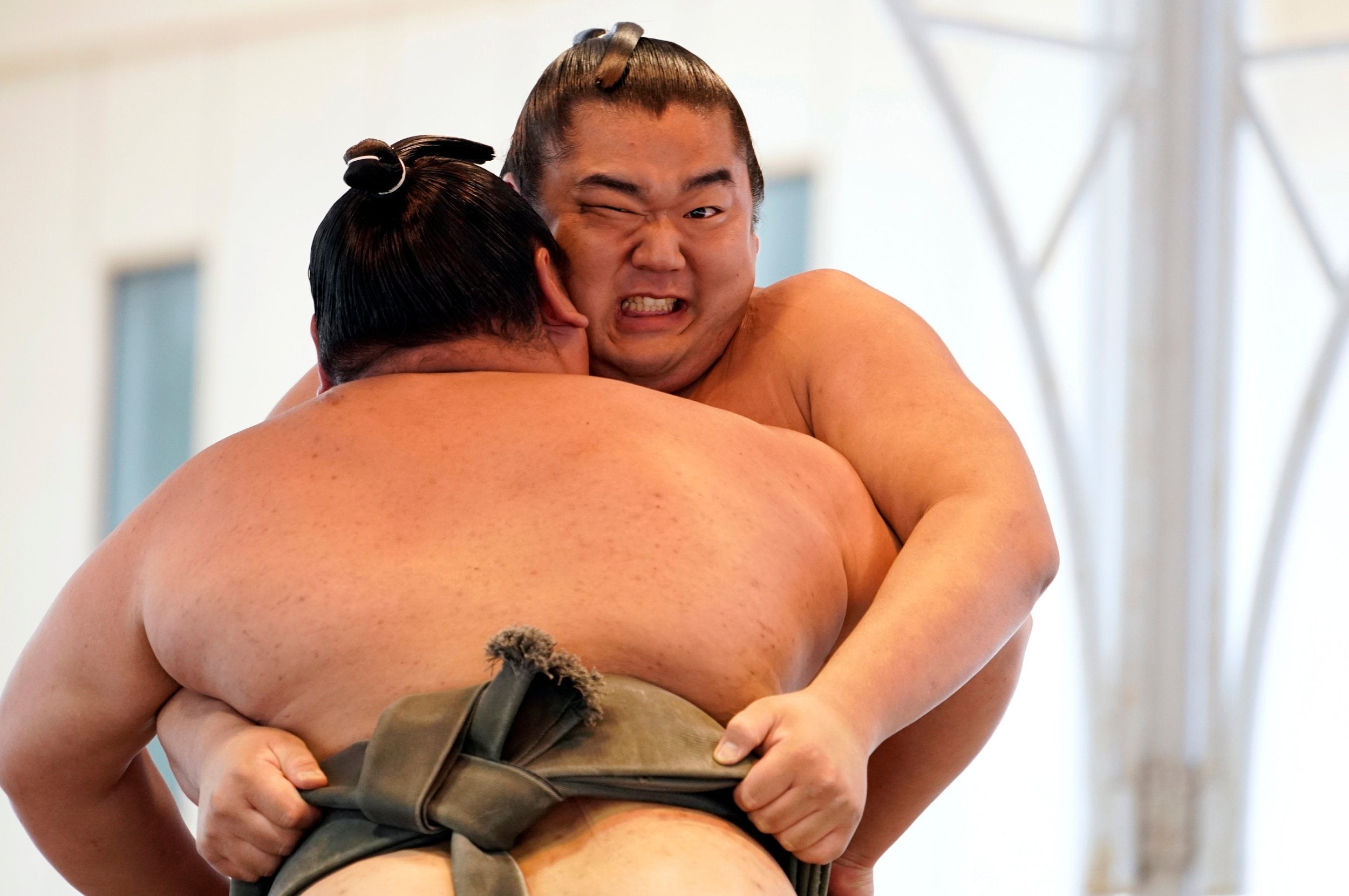Japan still revels in its sumo traditions as the rugby excitement builds
There was a mesmeric quality to my first sumo experience – it dragged me slowly back in time to the sport’s ancient roots

The Rugby World Cup may be dominating the headlines here in Japan – covering both the front and back pages of the national newspapers – but it’s not the only sport that’s been grabbing the attention of the locals.
Last month saw the conclusion of the aki basho, the fifth Grand Tournament of the year for sumo wrestling. Having arrived in Japan just days before the competition was wrapped up, I managed to get myself a ticket to head down to Tokyo’s Ryogoku Sumo Hall, an 11,000-seat arena nestled away on the east bank of the Sumida River.
It was a sporting spectacle quite unlike any I’ve witnessed before. The ritualised pageantry. The solemn recitations. The throwing of salt to purify the ring. The slapping of arms, legs and bellies – demonstrations to prove the wrestlers are unarmed. And then, at last, the sudden, breathless eruption of violence. There was a mesmeric quality to the experience, one that dragged you slowly back in time to the sport’s ancient roots.
Because, unlike any other mainstream sport in Japan, sumo wrestling remains deeply wedded to its past. The same set of rules and rites which applied when matches were performed in the Japanese imperial courts, as far back as the eighth century, continue to influence today’s proceedings.
How exactly sumo started, historians are unsure. But links have been made to harvest rituals associated with the Shinto religion. That legacy can be seen in the gold-tinged kimono worn by the referee, with his ceremonial fan to hand, and the stylised, shrine-like roof which covers the ring, or dohyo as it’s known in Japanese.
In all, it made for a stark contrast to the relentless rush and buzz that has come with following the Rugby World Cup. Later in the week, I’ll be exploring sumo in more depth as I touch upon its social and cultural significance to Japan, but also the scandal and controversy which has come to mar the sport in recent years. So make sure to keep an eye out. Safe to say the world of sumo isn’t what you’d expect.
Yours,
Samuel Lovett
Sports reporter
Join our commenting forum
Join thought-provoking conversations, follow other Independent readers and see their replies
Comments